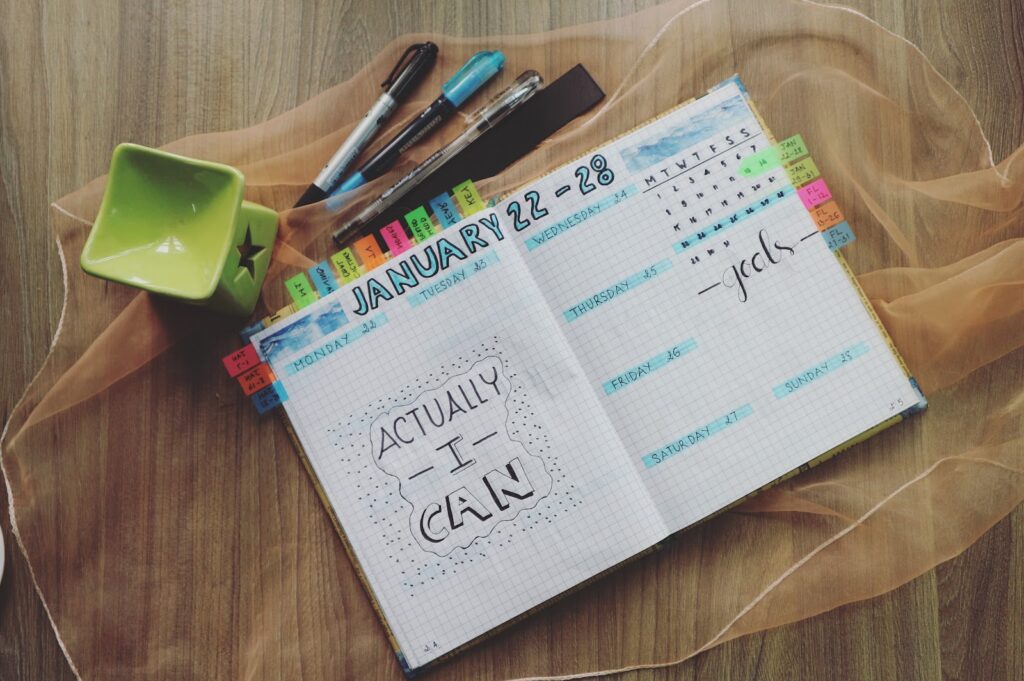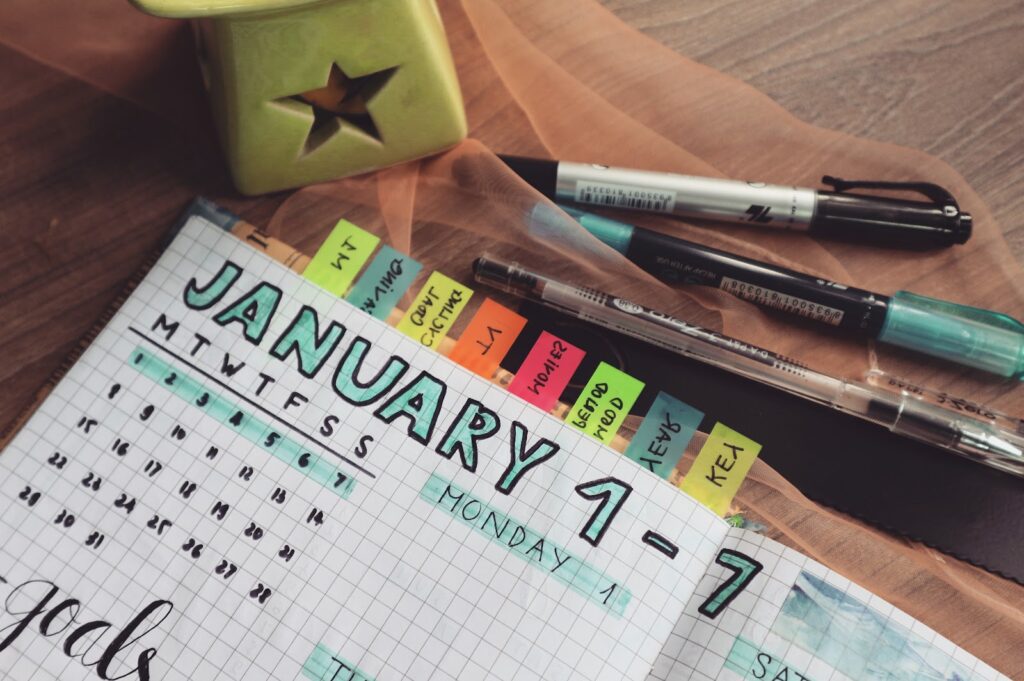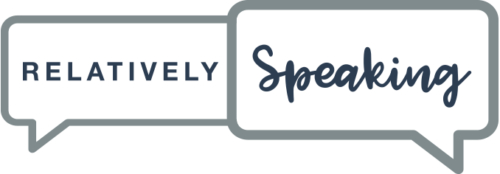Who doesn’t like the idea of a planner? Well, I suppose people who don’t like deadlines or having set commitments. We all know those people. But, for business to run smoothly – from moguls to mommy bloggers – you need to plan your work in advance.
There’s no one way to organize this information. People do it all online using elaborate project management software, simple Google calendars, or the good old fashioned hand-written day planners; that’s my go-to. Even as far back as high school I remember obsessing over the highlighted boxes in my planner (but I’m getting ahead of myself).
No matter what format you’re using, organizing your life can seem like an intimidating task at times and sometimes even checking your calendar can feel like a dizzying mess of “to-do’s.” That’s understandable, but you can overcome that feeling and focus on all of the benefits a planner has with just a few simple tips:
#1: Don’t look at Month View all the time

There are typically a few views of your planner (unless you have a printed monthly planner – then you’re stuck with that one). It’s good to fill out your whole monthly calendar to look at things from a big picture view, but during the week you should just reference the week you’re in. Constantly referring to the whole list of everything you need to do can be overwhelming and when you’re just worried about what needs to get done today, it can be seen as a distraction.
All of a sudden you’re worried about something that doesn’t need to get done until next week. And you know that, because it’s written on the calendar, but you’re concerned about it now. Stay on track with a solid Week View of day-to-day duties. This keeps the information relevant to what’s happening today – tomorrow – maybe a couple of days from now, but you can stay focused on what’s most important right now.
#2: Create a Routine for Planning

It would be pretty terrible business advice if we were actually telling you to never look at the Month View. We understand that it is still essential to your success – to plan in advance for at least a month (if not quarter in some cases). We’re just saying, you should find a time that you block out consistently to use as your planning time.
During these planning sessions, you can review your goals. What are they? Are you making progress? What should be done next and what comes after? That’s when you can map and plot activities on those weekly calendar views. Then, when the time comes and you wake up and you worry, “Oh no, what needs to be done today?” You already have the checklist. Go time.
Think of planning like meal prep for your to-do list. Rather than needing to “cook” (figure out what to do) every day as needed, you “cook” (plan) a lot at once to make it faster in the future. That’s productivity and that is how you can execute your goals effectively.
#3: Shorthand Reinforces Habits

You’ve probably heard of the popular journaling trend (lol), bullet journaling. If you haven’t, it just means that you have a journal full of grid paper (already cool) and you draw your own planner. The boxes, the days of the week, you draw it all yourself and people share a ton of examples online of how to creatively track certain habits like drinking water and cooking at home.
There’s a reason that it works so well, though. It’s popular because the more we use shorthand in our notes to ourselves, the more we reinforce the meaning behind the symbol we’ve assigned. Humans love patterns. For example, you could just shorten everything to recognizable initials like Relatively Speaking becoming “RS” on my calendar.
Obviously, the written planner has more creative options for this, but you can still keep shorthand naming conventions in mind when creating your online calendar/project plan. Your planning sessions will go much quicker this way. That’s how bullet journaling works and it’s an easy way to track goals and reinforce good habits!
BONUS – #4: Color is Key

Again, this tip might be more fun if you’re a physical planner user, but you can still translate some of these tips with digital planner options. Especially project management software often has a variety of formatting options that can make patterns identifiable.
Categories
If you’re going to use colors consistently, what do you have to work with? How many color options are there and how can you use them to organize the information on your calendar? This helps you group similar activities or reminders with those colors in mind. Red could indicate a deadline while green could serve as a financial reminder. If you’re only using one color, you can still indicate categories with a different style of writing, like cursive, or different styles of bullet points.
Meaning
Now that you know what you’re working with, you need to identify what each color means. You can even draw a key if it helps you remember, but they should make some sort of sense at-a-glance. Here is an example from my last job’s Google Calendar:
- Red = Internal team meetings (Team Pyro)
- Green = Company-wide meetings (company logo was green)
- Yellow = Important reminders about clients (when they’re OOO, best days to email, etc.)
- Blue = Client meeting (meaning they were in that meeting/call) -calm color-
- Purple = Personal
- Grey = Prep time for calls or buffers for meetings that would run long (internal)
They don’t all need a deep intrinsic connection to the color, but you will begin to associate that color with that category, so it’s usually good if it matches for easy recognition.
Boundaries
There are really no boundaries when it comes to organization, but you don’t need to obsess over it. The whole point about this being so customizable is that you find what works best for you. You shouldn’t force yourself to try to use a system that you’ll hate. What will you remember? What will you enjoy looking at every day? There are so many options out there from apps to sticker packs for you to organize what you need to do in a way that supports you reaching your goals.
The more your planning sessions feel like a chore, the more you’ll avoid them just like all the other ‘chores’ that just popped into your mind because that’s what we do. You need to enjoy the structure as much as you love the execution of day-to-day activities to achieve long-term success.
Good Luck!
Many of us are “do-ers” and don’t identify as much as “planners,” but to be a well-rounded leader, you need some element of both. Don’t bite off more than you can chew at first and don’t beat yourself up if plans change and you draw a bunch of arrows moving things to other days and re-write the same thing a few times. Know that this skill might take time to develop, but it makes your life much less stressful in the long-run.
Practice makes perfect, so check out our Effective Execution Lunch & Learn workshops to continue growing!

